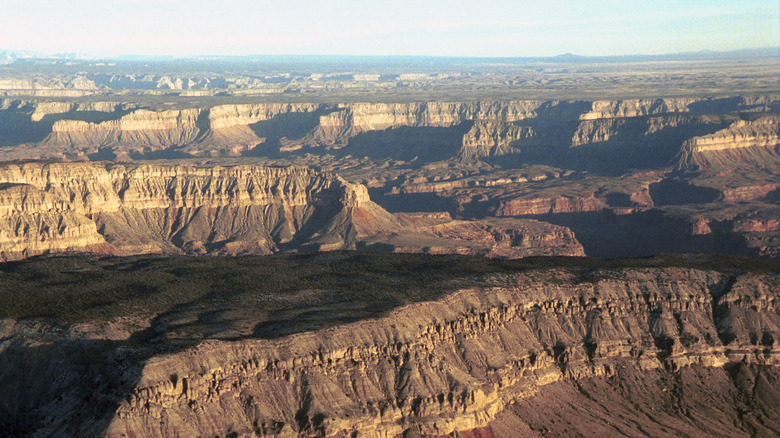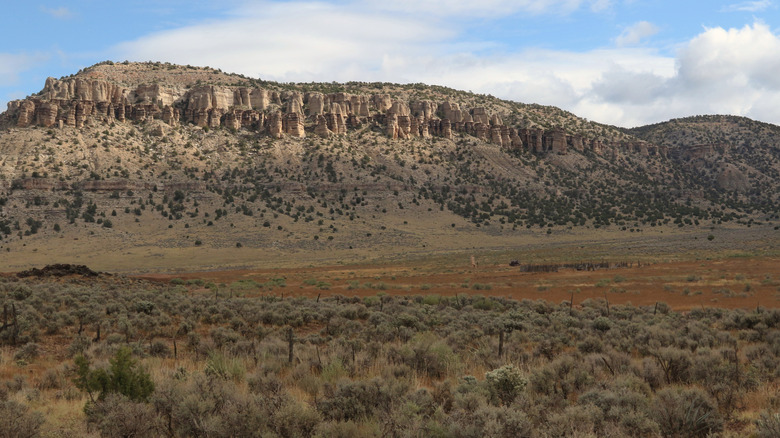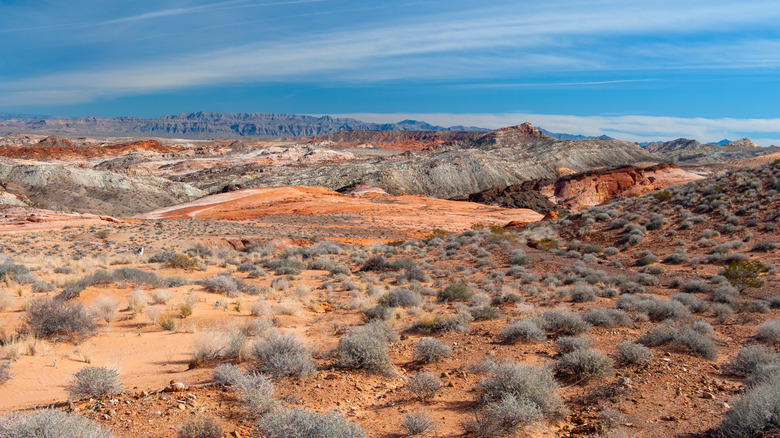
Arizona's celebrated Grand Canyon is usually regarded as being interchangeable with its namesake Grand Canyon National Park. However, the Grand Canyon is so Grand that it cannot be contained in a single national park site. While Grand Canyon National Park does showcase the most popular viewpoints and attractions, the canyon's far northwestern edge extends into an extremely remote and undeveloped region of federal lands known as Grand Canyon-Parashant National Monument. Situated in the rugged desert
landscape near Arizona's border with Nevada, Grand Canyon-Parashant showcases a secret side of the world-famous canyon you may not have even known existed.
The Grand Canyon is not without its secrets, of course. For example, you can actually drive right to the bottom of the Grand Canyon via the little-known Diamond Creek Road. You can even achieve hard-to-find solitude at the Grand Canyon on the challenging and beautiful Escalante Route. Yet when it comes to solitude and isolation, Grand Canyon-Parashant is in another league entirely. Located more than five hours from its national park counterpart, Grand Canyon-Parashant is about as far from civilization as you can be while still being in the lower-48 states. For proof, look no further than the fact that the park contains four different designated wilderness areas. This magnificent isolation, however, is ultimately Grand Canyon-Parashant's central charm. If you're up to the task, a visit to Grand Canyon-Parashant will provide you with the soul-affirming thrill of braving one of America's last truly wild places, despite the inevitable challenges it brings.
Read more: The 5 Best Parks Where You Can See Bison Roam (Other Than Yellowstone), According To Visitors
Discover A Side Of The Grand Canyon You've Never Seen Before

Grand Canyon-Parashant National Monument lies in a vast but remote region of Northwestern Arizona called the Arizona Strip on the northern edge of the Grand Canyon watershed. The national monument itself protects 1,048,325 acres of land in the Arizona Strip, where the vibrant and distinct ecosystems of the Mojave Desert, the Colorado Plateau, and the Basin and Range Province all converge. This intricate merging of disparate ecosystems creates a remarkable landscape defined by red rock deserts, towering mountains, and dramatic canyons forged by the same waterways that feed into the Colorado River.
Grand Canyon-Parashant features natural landmarks as diverse as the 8,028-foot Mount Trumbull, the rocky wonderland of the Shivwits Plateau, and the colorful Grand Wash Cliffs. The park's landscape also features an extraordinary geological tapestry, defined by intricate canyon networks, eye-catching buttes, and even the petrified remnants of lava flows from ancient volcanic eruptions. The park's distinctive convergence of ecosystems also provides it with a surprisingly rich natural environment, with plenty of hardy yet strangely beautiful plant and animal species that thrive in this harsh desert region.
As a federal land preserve, Grand Canyon-Parashant National Monument operates jointly under the National Park Service and the Bureau of Land Management. Despite its undeveloped nature, Grand Canyon Parashant does have some worthwhile areas to visit, like the colorful Grand Wash Cliffs Wilderness, the breathtaking Twin Point Overlook, and the otherworldly Andrus Canyon. You can even find spots that preserve the region's few (but notable) past human inhabitants, from the ancient rock petroglyphs at the Nampaweap site to the remnants of later American settlements at Tassi Ranch, Pakoon Springs, and Grand Gulch Mine.
Experience America's Last Remaining Frontier In A Truly Pristine Wilderness

Grand Canyon-Parashant National Monument is perfect if you're craving national park-level views with zero national park-level crowds. Despite being larger than some states, Grand Canyon-Parashant is among the least-populated and least-developed areas in the contiguous United States. On one hand, this means you're unlikely to have any large crowds of tourists sullying your experience. On the other hand, a region this remote and undeveloped brings with it quite a few challenges. The park has little to no amenities or modern infrastructure, with virtually no reliable cellular service anywhere. As such, visitors need to come extremely prepared to be self-reliant, and should probably have a good deal of backcountry experience at hand.
Grand Canyon-Parashant's few driving roads are often mere primitive backcountry roads that are not suitable for all vehicles. If you're driving into the park, you'll need a 4x4, high clearance vehicle with tires rated for off-pavement use (it wouldn't hurt to bring a few spare tires as well). Virtually all of the park's hiking trails, though scenic, are rugged backcountry routes that require some skill and experience (though the park's rustic landscape does make for some great OHV adventures).
Another downside of Grand Canyon-Parashant's extremely remote location is that it's quite far away from any modern overnight lodging spot. Southern Utah's underrated red rock paradise of St. George is about a three-hour drive away. Las Vegas, the nearest major city, is about four and a half hours away. Taking advantage of lodging options in St. George or Las Vegas would require a long, arduous drive to Grand Canyon-Parashant. Otherwise, you're in for some truly rugged backcountry camping in the wilderness. If that appeals to you, however, backcountry camping in Grand Canyon-Parashant may be the nation's best!
Ready to discover more hidden gems and expert travel tips? Subscribe to our free newsletter for access to the world's best-kept travel secrets.
Read the original article on Islands.












